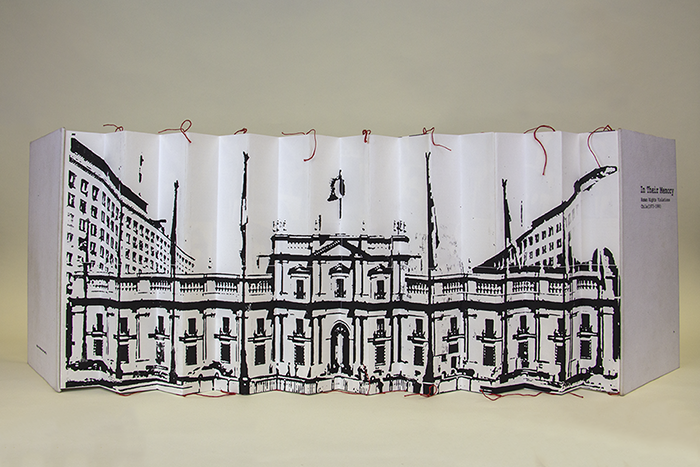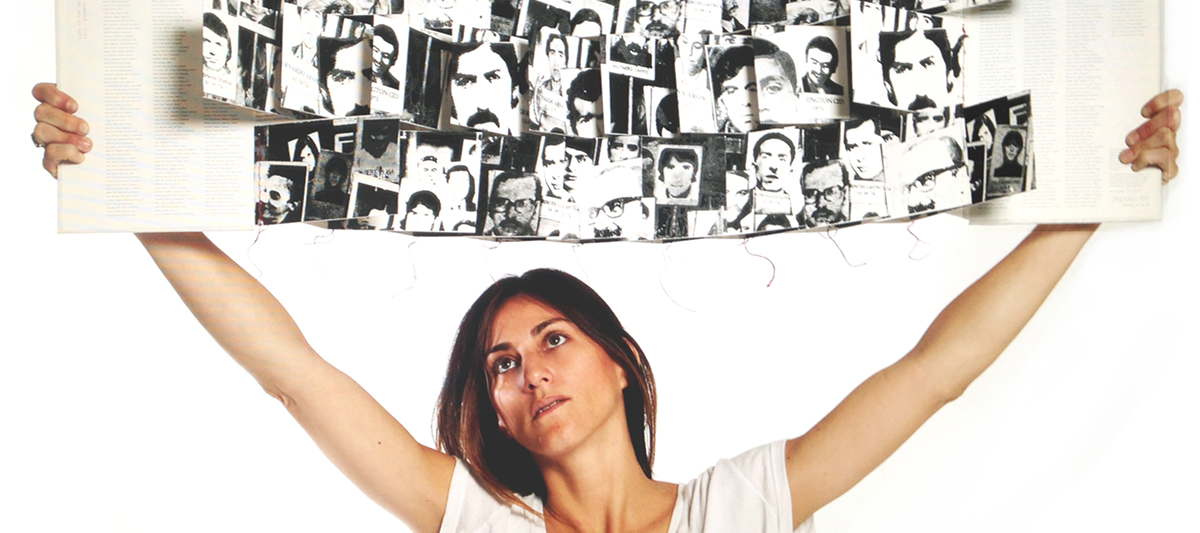DMV Color presents artists’ books, graphic novels, photobooks, and zines by women of African American, Asian American, and Latina heritage with ties to the District of Columbia, Maryland, and Virginia, known locally as the DMV. The works on view depict intimacies of family life, legacies of enslavement, dislocation tied to immigration, changes resulting from rampant development, and more. On view in NMWA’s Betty Boyd Dettre Library and Research Center (LRC) through March 4, 2020.
Originally from Santiago, Chile, Maria Verónica San Martín (b. 1981) is a New York-based printmaker, sculptor, performance artist, and bookmaker who attended the former Corcoran School of the Arts & Design in Washington, D.C. Her evocative artist’s book In Their Memory (2012) is featured in DMV Color. San Martín’s work functions as a tactile form of resistance, it critically examines power structures and the sanitization of historical atrocities.
San Martín’s work draws upon Chile’s fraught political history. In Their Memory memorializes the Chilean citizens who were tortured and disappeared under General Augusto Pinochet’s dictatorship (1973–1990). As a result, thousands of Chileans sought asylum in Canada, Sweden, and the U.S., including the DMV area. The full scope of the human rights injustices committed by the regime remains under investigation to this day.
In an interview with San Martín, she explained her activist approach. “As a second-generation witness of the regime’s atrocities and a first-generation artist experiencing the legacy of the dictatorship on the collective body…my practice rejects the idea of a progressive history with a fixed past.”
In Their Memory invites viewers to grapple with the erasure of the era’s violent political history. Wherever the work travels, it honors and preserves the identities of missing people, along with the resilience of their families. Through archival practices, printmaking, and bookmaking, San Martín also explores the role of collective memory. The flag book structure is both a sculpture and a book immortalizing, through black-and-white portraits and lists of names, the victims of the Pinochet regime.

Maria Veronica San Martin, In Their Memory, 2012; Artist’s book; Courtesy of the artist; Photo by Emily Shaw, Betty Boyd Dettre Library & Research Center, NMWA
The process of etching and printing images onto the book’s surface embodies the painful erasure and reappearance of those missing, literally and from the Chilean people’s collective memory. An image of Chile’s presidential palace, La Moneda, is printed onto the back. Images of missing Chilean citizens juxtaposed against the government’s seat of power further embodies issues of unjust institutions.
Today, the people of Chile have taken to the streets to protest social inequality (read more about the 2019–20 Chilean protests on Wikipedia). As the country’s economic model was put in place under Pinochet, the dictator’s legacy still looms. In an interview with the LRC, San Martín identified the spike in political engagement among Chileans, especially the youth, as important to transforming economic and social structures that favor the rich and discard the middle class and poor. “When this social crisis arose, there was a [collective] conscious[ness] happening.” In Their Memory is an important vehicle of activism and social justice, connecting Chile’s past to this contemporary moment.
